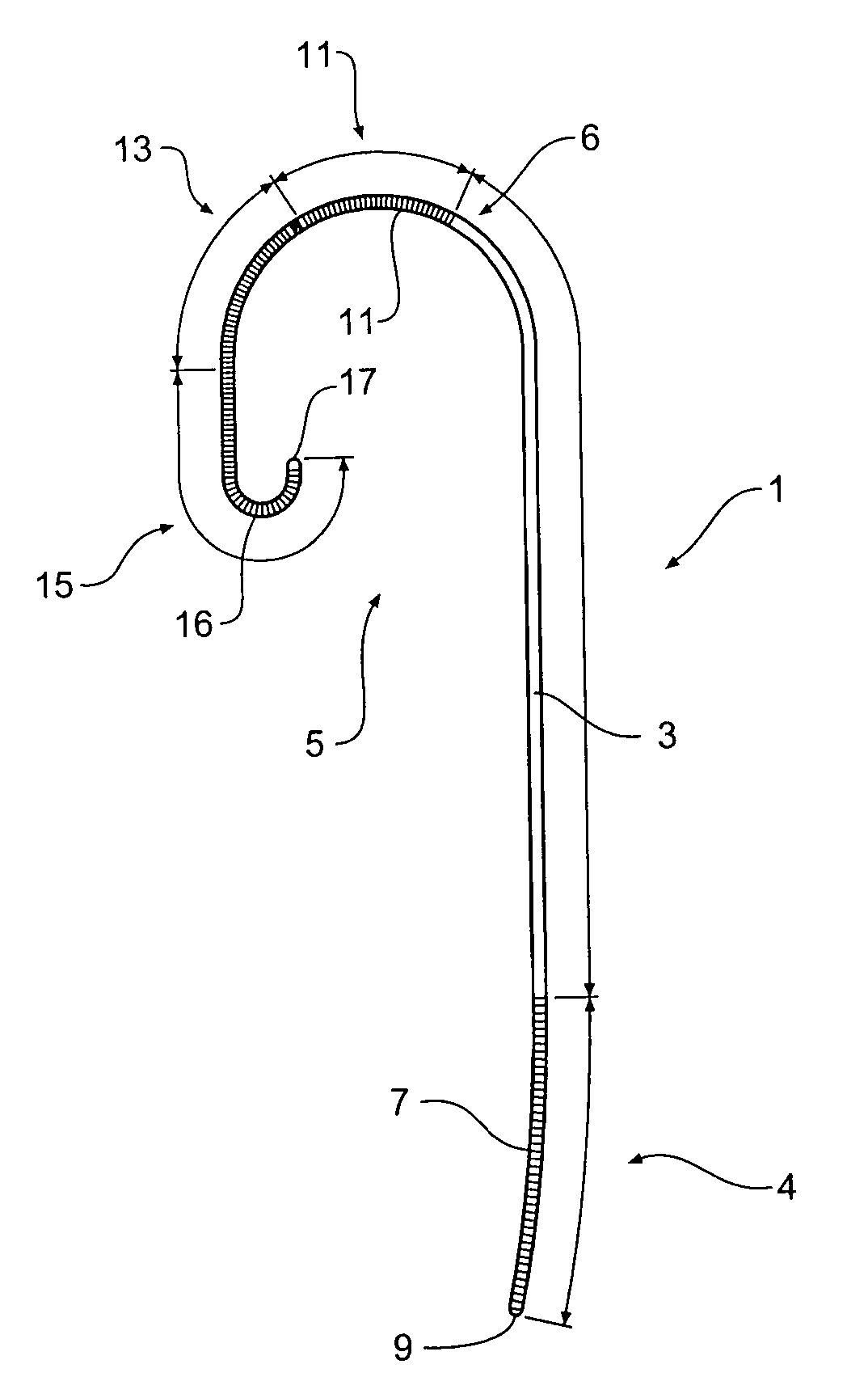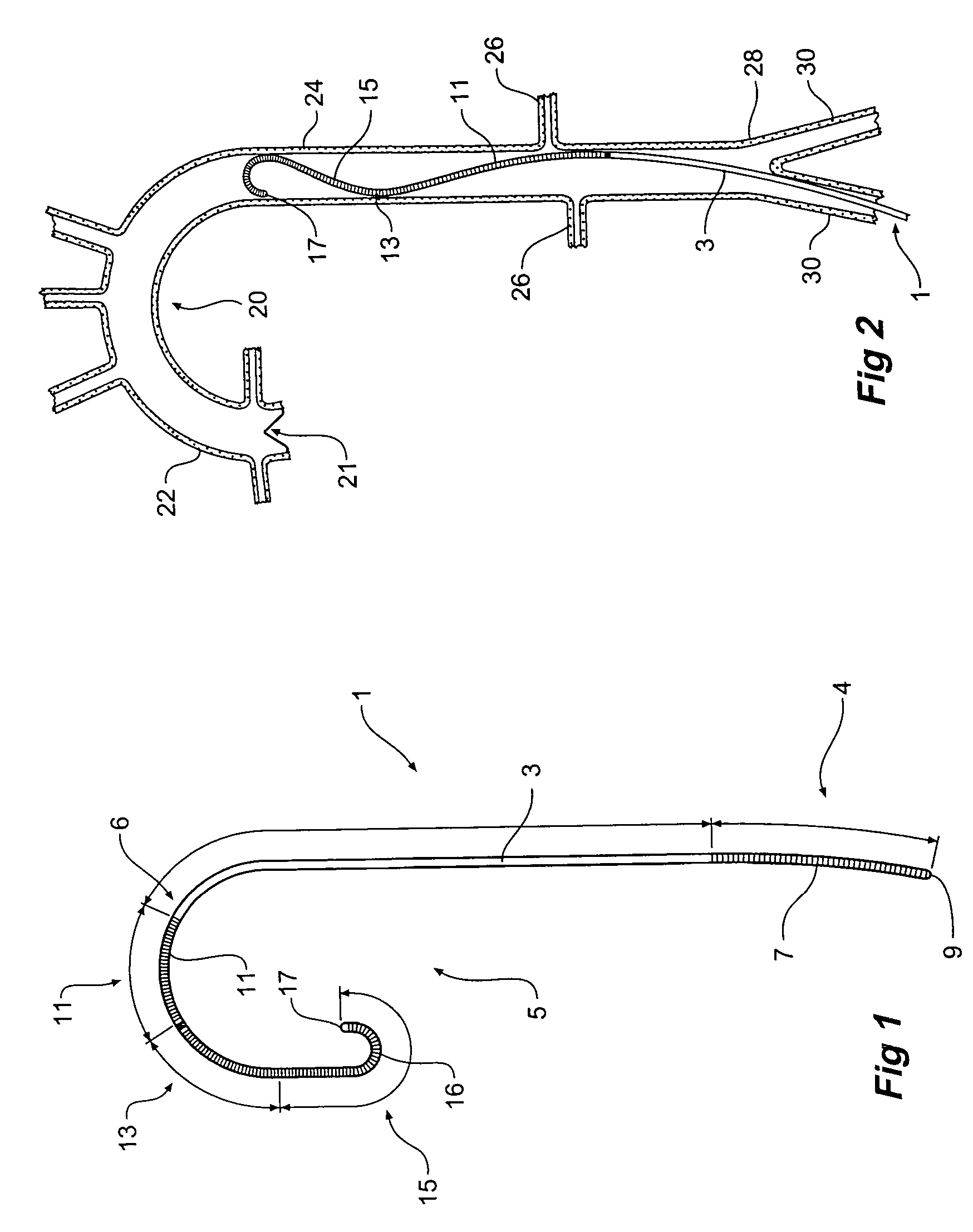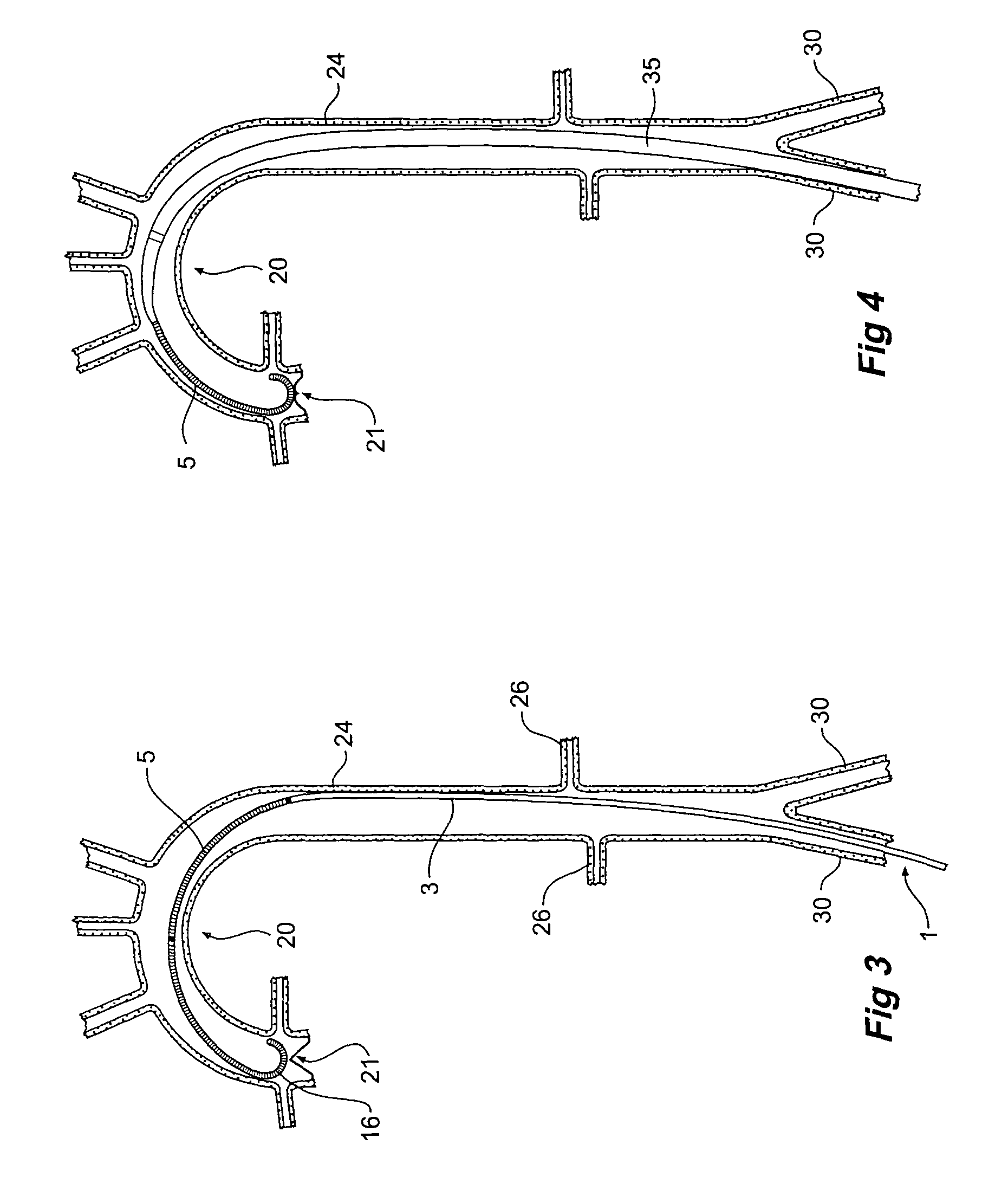Guide wire
a technology of guide wires and wires, which is applied in the field of guide wires, can solve the problems of difficult devices such as endovascular stent graft devices, not easily traversing the vasculature, and not being able to control or influence the typical guide wires
- Summary
- Abstract
- Description
- Claims
- Application Information
AI Technical Summary
Benefits of technology
Problems solved by technology
Method used
Image
Examples
Embodiment Construction
[0053]Now looking more closely at the drawings it will be seen that FIG. 1 shows the general layout of a guide wire according to one embodiment of the invention. The guide wire includes a combination of flexibilities, lengths of the flexible sections and the size and shape of the curves that together result in a guide wire that can be percutaneously introduced through a needle, advanced through the artery without damaging the artery, seat firmly in the anatomy when in place and not “poke” or irritate the aortic heart valve.
[0054]In FIG. 1, the guide wire generally shown as 1 includes a central zone 3, a proximal zone 4 and a distal zone generally shown as 5. The central zone 3 is of substantial stiffness to assist with the deployment of a stent graft deployment device. The proximal zone 4 ranges in stiffness from full stiffness adjacent to the central zone 3 down to a semi-stiff proximal end 9.
[0055]The distal zone 5 includes a first semi-stiff zone 11 which is a transition from ful...
PUM
 Login to View More
Login to View More Abstract
Description
Claims
Application Information
 Login to View More
Login to View More - R&D
- Intellectual Property
- Life Sciences
- Materials
- Tech Scout
- Unparalleled Data Quality
- Higher Quality Content
- 60% Fewer Hallucinations
Browse by: Latest US Patents, China's latest patents, Technical Efficacy Thesaurus, Application Domain, Technology Topic, Popular Technical Reports.
© 2025 PatSnap. All rights reserved.Legal|Privacy policy|Modern Slavery Act Transparency Statement|Sitemap|About US| Contact US: help@patsnap.com



